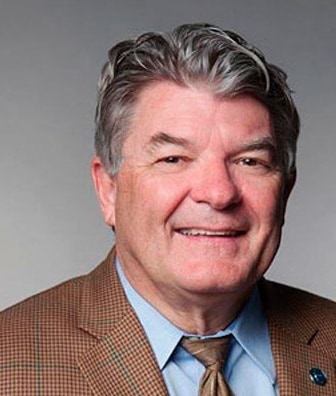Dr. Ricky E. Harrell notes that in a technology-driven specialty, orthodontists must make time to provide the human touch.
As a longtime observer as well as active participant in the field of orthodontics since 1982, I have had the luxury of watching, evaluating, and reacting to the invasion of orthodontics by a myriad of technological advances. Initially, the change from edgewise brackets to the preadjusted, preangulated appliances was a paradigm shift, especially for older practitioners who had been bending wire for decades when the straight-wire appliance entered the U.S. market.
A decade or so later along came computerized imaging and records storage, computerized cephalometric tracing programs, digital radiography, moving teeth with plastic aligners, temporary anchorage devices, and self-ligating brackets that actually gained traction with the practicing population of orthodontists. Surely, this period would prove to be the pinnacle of the introduction of technology into orthodontics. But not so fast.
In another short decade later, we were experiencing the introduction of 3D scanning, CBCT technology, 3D printing, both plastic and metal, and artificial intelligence into the field of dentistry and specifically orthodontics. Because of advances in bracket and wire technology, we were able to change our scheduling protocols and see the patients less frequently.
Along came COVID-19 with all of its disruptions just a few short years ago. We moved into technologies that allowed us to see our patients but not require a physical visit. Other technologies also entered into the orthodontic realm as well. Treatment planning with aligner therapy could now not only show the predicted positions of crowns with treatment, but the database had expanded enough so that now we can also predict root position with aligner therapy. We can treat cases with a new breed of fixed appliances that require no leveling. The teeth are directed to their final positions with the appliance without the traditional steps that we take with edgewise appliances. We are doing surgery first in selected cases, surgeries with aligner products, and also incorporating 3D printing into the rigid fixation devices for orthognathic cases.
Despite all of these advances, we still cannot replace one aspect of the provision of healthcare to our patients. The element that is irreplaceable is the human touch. No machine or piece of technology can replace a kind word, a pat on the back for a job well done, or a sympathetic ear when one of your young patients discusses a problem.
We are in a unique position to influence not only our younger patients but also our older patients. As much as we drive the idea of less contact with patients equating to practice efficiency, how do we put a price tag on a warm smile when patients enter our office, a congratulations when they accomplish a life goal, or reaffirmation that they can accomplish their life goals if the goals are reasonable and realistic, or even console them when they have a tragedy in their lives? These are all things to consider when we are trying to redirect our practices into a more technology-driven, less humanistic approach to our specialty. Embrace technology, and use it! But never forget, we are in the human business, and nothing can change that basic premise.
Everyone have a great 2023!
Smile Stream Solutions prides itself on the human touch with its staff of RDA Certified Account Managers and sales agents. Read more about their quest to a strategic supplying partner here: https://orthopracticeus.com/smile-stream-solutions-everything-you-need-to-create-a-beautiful-smile/
Stay Relevant With Orthodontic Practice US
Join our email list for CE courses and webinars, articles and mores

 Ricky E. Harrell, DMD, MA, is a 1979 graduate of the University of Alabama School of Dentistry. After serving 3 years as a general dentist in the Navajo Area Indian Health Service, he returned to The University of Alabama at Birmingham (UAB) and completed his orthodontic residency in 1984. After 22 years in the private practice of orthodontics in Westminster, Colorado, he entered into full-time orthodontic education at the University of Colorado in 2006. He became Program Director for the PG Orthodontic Residency at the Medical University of South Carolina from 2015 to 2017 and then came to Atlanta to assume the role of Program Director at Georgia School of Orthodontics in 2017 where he still holds that position. Dr. Harrell is a life member of the American Dental Association and the American Association of Orthodontics. He is an ABO Diplomate and a Fellow of the American College of Dentists.
Ricky E. Harrell, DMD, MA, is a 1979 graduate of the University of Alabama School of Dentistry. After serving 3 years as a general dentist in the Navajo Area Indian Health Service, he returned to The University of Alabama at Birmingham (UAB) and completed his orthodontic residency in 1984. After 22 years in the private practice of orthodontics in Westminster, Colorado, he entered into full-time orthodontic education at the University of Colorado in 2006. He became Program Director for the PG Orthodontic Residency at the Medical University of South Carolina from 2015 to 2017 and then came to Atlanta to assume the role of Program Director at Georgia School of Orthodontics in 2017 where he still holds that position. Dr. Harrell is a life member of the American Dental Association and the American Association of Orthodontics. He is an ABO Diplomate and a Fellow of the American College of Dentists.
